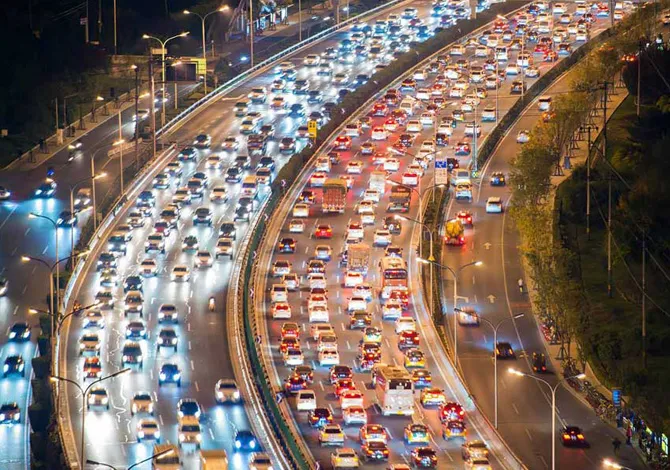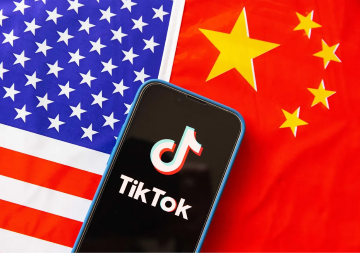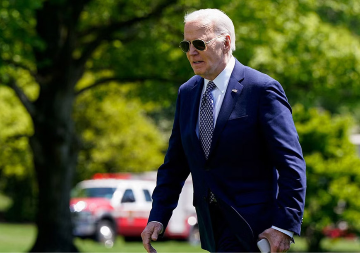
Pune figures high on the list of cities with robust civic activism. Citizens willing to lend a hand to their city have assembled themselves under several organisations, each devoted to a specific area of their interest. Based on their observations, information and study, they identify problems, areas of improvement and also frame strategies on how to achieve them. Armed with such data, they interact with local government and their officials. In doing this, they work as pressure groups as well as collaborators in public causes. Among the most significant results of these initiatives is Pune’s citizen participation budget, also referred to as participatory budgeting.
Recently, the Pune Platform for Collaborative Response (PPCR), a citizens’ forum, has produced a report on the city’s traffic. This was conducted on the social media platform ‘X’. Citizens’ experiences and observations on matters of city traffic, pieces of very area-specific facts shared by individuals and groups—all yielded invaluable data. The comments also comprised possible solutions and recommendations. The forum collated these information snippets and put them together methodically in a report. This was formally handed over to the Pune city traffic police for review and action.
Citizens’ experiences and observations on matters of city traffic, pieces of very area-specific facts shared by individuals and groups—all yielded invaluable data.
Traffic congestion is a rapidly rising issue in cities. In Pune, this appears to have sharply worsened and this surely would have drawn the attention of groups such as the PPCR. Pune’s traffic situation has already been documented by TomTom, the lead geolocation technology specialist that measures cities around the world by their travel time. The TomTom’s Traffic Index 2022, covering 390 cities and 56 countries, ranks Pune as the sixth-most congested city in the world and the second-most congested in India after Bengaluru. This has further worsened and it now takes on an average, as per the report, a minute and ten seconds more to traverse 10 km in the city since last year. The average speed in the city during rush hour is 19 km/hr. Since citizens are required to commute on a daily basis, they directly bear the consequences of traffic woes. The issue is highly central to city productivity, individual convenience, health and well-being. Thus, PPCR’s report is highly significant from the citizens’ point of view.
One of the most noteworthy pieces of information that came to light was the lack of wide roads as a major contributor to traffic congestion in the city. Of Pune’s total road network, 62 percent or almost two-thirds, is narrower than nine metres. This was primarily responsible for traffic snarls in the city. The situation was exacerbated by large deficiencies in basic infrastructure, such as the lack of dedicated service roads along highways, and an insufficient stormwater drainage system. According to the report, traffic signals at 375 major intersections in Pune are deemed ineffective, necessitating increased police intervention.
Neither was the average commuter helping the city’s traffic through very high levels of traffic indiscipline. Traffic violations were rampant in the city. Breaking signals, driving on the wrong side, cutting lanes, parking vehicles on zebra crossings, illegal parking, and utilising bridges for parking were identified as major concerns plaguing the city’s traffic. The PPCR members also convened a meeting with the traffic head of the city police and discussed the report with him. The police chief, in turn, shared the data of a study conducted by the traffic police. The forum members were assured that the police would work with the forum and suitable action based on the report’s recommendations would be taken.
Pune’s traffic situation has already been documented by TomTom, the lead geolocation technology specialist that measures cities around the world by their travel time.
One of the pieces of data that was worrisome was that outstanding traffic violation fines amounting to INR 250 crore over the past three years have remained unpaid. This clearly indicated commuter indifference towards penalty payments. The use of 'e-challans' as an instrument of quick fining and greater traffic discipline is proving counter-productive. Most of these are related to two-wheelers and include violations such as driving on the wrong side, disregard for signals and lane cutting. Incidentally, Pune has emerged among the top users of motorbikes that are currently more than 3.2 million in the city. The total vehicular population in Pune numbers more than 4 million.
The data also revealed cyclists and pedestrians were the victims in 92 percent of fatal traffic accidents. It was also distressing that all accidental deaths that involved two-wheeler riders last year were of individuals not wearing helmets. The alarming rise in the perilous practice of driving on the wrong side was a significant concern. This was corroborated by the former president of the Maratha Chamber of Commerce, who lamented the diminishing fear of law enforcement among citizens. There was a clear need for stringent law implementation, including direct prosecution in court.
The meeting emphasised the urgency of launching a comprehensive civic awareness campaign to tackle these challenges effectively. The campaign aims to instil a sense of responsibility among citizens and educate them about traffic laws. Leveraging various media platforms like social media and community outreach, the joint effort by PPCR and Traffic Police plans to engage with educational institutions to disseminate crucial information and garner wider public cooperation.
The campaign aims to instil a sense of responsibility among citizens and educate them about traffic laws.
While all these are commendable steps, it must be pointed out that the ground situation is complicated and many problem-solving suggestions are slated to be difficult. The large deficiency in the city in regard to road space is tough to solve since land on both sides of roads is already mostly built. Although, in theory, roads can still be widened through land and building acquisition, the compensation that needs to be paid to the owners is prohibitive under the new land acquisition law. The Right to Fair Compensation and Transparency in Land Acquisition, Rehabilitation and Resettlement Act, 2013 (RFCTLARR), prescribes two times the annual ready reckoner rate to be paid in urban areas. Such huge amounts are beyond the capacity of the Pune Municipal Corporation (PMC). This means that the PPCR report’s identification of the paucity of road space as the primary cause of traffic congestion is largely going to remain unsolved.
Infrastructural deficits pointed out by the PPCR report could, theoretically, be made good by the PMC. However, creating transport infrastructure such as flyovers, bridges, underpasses, grade separators and signalling systems cost a lot of money. It is difficult to imagine, given the financial fragility of India’s urban local bodies (ULB), that even the good ones would be able to commit such money to a single item of transport when they have multiple obligations to fulfil. In any case, the PPCR would have to take these matters to the PMC since these do not fall under the domain of the city police.
Traffic regulation, including traffic violations, falls within the competence of the traffic police. However, the police, in the face of a rising city population and progressively more junctions and intersections becoming problematic, get constrained by the shortage of manpower. They have a maximum of 750 cops that they can deploy on traffic duty on any given day. A fine balance also has to be maintained between smooth traffic movement and pulling up cars and two-wheelers out of the traffic for penalisation which causes traffic disruptions. As already cited, the digitised fine collection is proving problematic. Overall, the ability of governance mechanisms to deal with traffic congestion appears to be limited, and cities may have to live with greater degrees of traffic congestion in the coming days.
Ramanath Jha is Distinguished Fellow at Observer Research Foundation
The views expressed above belong to the author(s). ORF research and analyses now available on Telegram! Click here to access our curated content — blogs, longforms and interviews.




 PREV
PREV


